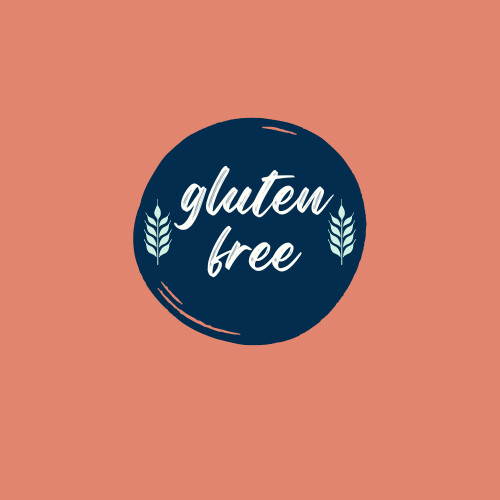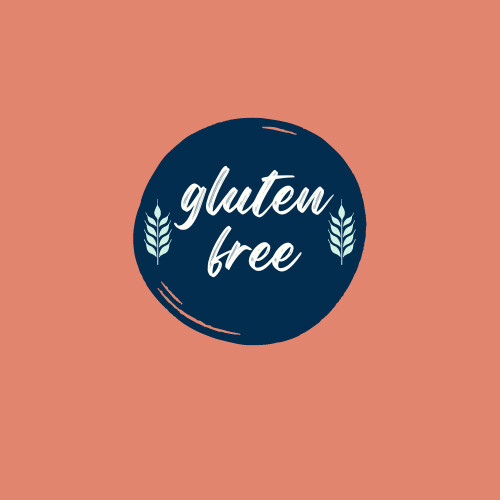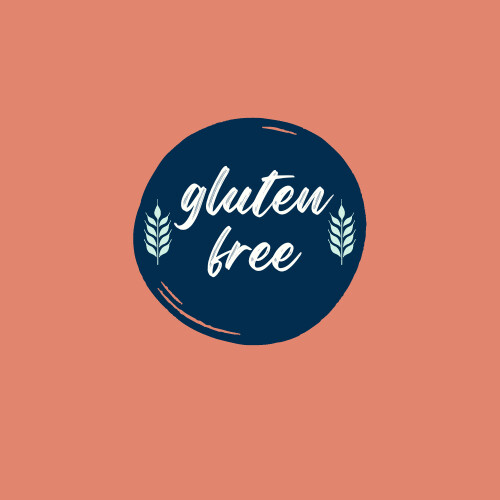
“Gluten free” is a term that you see often and hear it recommended even to help you feel better; however, it can feel overwhelming. To learn how to go gluten free, you first must start with an understanding of what gluten is.
Gluten is a protein in a few different grains. Since it is only a part of a grain, the term gluten is not listed as a separate ingredient on labels. That means we need to know what to look for. Gluten is found in wheat, barley, rye and triticale. So if any of those are listed as an ingredient, you know to steer clear.
With the rise of awareness, many companies even print the Gluten Free Certified seal on their products, which is also very helpful.
Now that we know what gluten is, let’s look at some practical ways to get started on your gluten free journey.
- Eat foods that are naturally gluten free.
While there are multiple gluten free substitutions these days, these items are not necessarily healthful. Eating meats and produce that are already free of gluten is a better way to go for your health and for your wallet. Highly processed foods have a lot of other fillers in them. While some processed foods are admittedly better for you than others, it’s still best to limit them as much as possible.
Helpful tip: Shop the perimeter of the grocery store. These areas are typically where you find the foods that are the closest to nature.
2. Become a label reader.
To be successfully gluten free, reading ingredient labels will be a part of your routine. Any time you see wheat, barley, rye or triticale or any form of them, you know to skip it. Other words and ingredients to look for are bulgur, malt, couscous, farina, seitan, and spelt. A simple internet search can produce even more extensive lists. In many instances, you may be surprised that simply switching to a different brand will fix the problem.
Helpful tip: Before taking a trip to the grocery store, practice with the things already in your pantry. This will help reduce the overwhelm when you go to the store.
3. Acquaint yourself with new favorite brands.
Like other grocery items, you’ll quickly learn what you like and don’t like. Some of our family’s favorites include Schar, Udi’s, En-R-Gee, Glutino, King Arthur’s and Enjoy Life. Fortunately, there are several options out there now.
Helpful tip: Many grocery stores have designated gluten free sections. Check there first.
Going gluten free has HUGE benefits and doesn’t have to be overwhelming! Just start with basic changes, and you’ll be a pro in no time!
Have questions? Leave them for me in the comments, and I’ll be happy to answer them.

“Gluten free” is a term that you see often and hear it recommended even to help you feel better; however, it can feel overwhelming. To learn how to go gluten free, you first must start with an understanding of what gluten is.
Gluten is a protein in a few different grains. Since it is only a part of a grain, the term gluten is not listed as a separate ingredient on labels. That means we need to know what to look for. Gluten is found in wheat, barley, rye and triticale. So if any of those are listed as an ingredient, you know to steer clear.
With the rise of awareness, many companies even print the Gluten Free Certified seal on their products, which is also very helpful.
Now that we know what gluten is, let’s look at some practical ways to get started on your gluten free journey.
- Eat foods that are naturally gluten free.
While there are multiple gluten free substitutions these days, these items are not necessarily healthful. Eating meats and produce that are already free of gluten is a better way to go for your health and for your wallet. Highly processed foods have a lot of other fillers in them. While some processed foods are admittedly better for you than others, it’s still best to limit them as much as possible.
Helpful tip: Shop the perimeter of the grocery store. These areas are typically where you find the foods that are the closest to nature.
2. Become a label reader.
To be successfully gluten free, reading ingredient labels will be a part of your routine. Any time you see wheat, barley, rye or triticale or any form of them, you know to skip it. Other words and ingredients to look for are bulgur, malt, couscous, farina, seitan, and spelt. A simple internet search can produce even more extensive lists. In many instances, you may be surprised that simply switching to a different brand will fix the problem.
Helpful tip: Before taking a trip to the grocery store, practice with the things already in your pantry. This will help reduce the overwhelm when you go to the store.
3. Acquaint yourself with new favorite brands.
Like other grocery items, you’ll quickly learn what you like and don’t like. Some of our family’s favorites include Schar, Udi’s, En-R-Gee, Glutino, King Arthur’s and Enjoy Life. Fortunately, there are several options out there now.
Helpful tip: Many grocery stores have designated gluten free sections. Check there first.
Going gluten free has HUGE benefits and doesn’t have to be overwhelming! Just start with basic changes, and you’ll be a pro in no time!
Have questions? Leave them for me in the comments, and I’ll be happy to answer them.

“Gluten free” is a term that you see often and hear it recommended even to help you feel better; however, it can feel overwhelming. To learn how to go gluten free, you first must start with an understanding of what gluten is.
Gluten is a protein in a few different grains. Since it is only a part of a grain, the term gluten is not listed as a separate ingredient on labels. That means we need to know what to look for. Gluten is found in wheat, barley, rye and triticale. So if any of those are listed as an ingredient, you know to steer clear.
With the rise of awareness, many companies even print the Gluten Free Certified seal on their products, which is also very helpful.
Now that we know what gluten is, let’s look at some practical ways to get started on your gluten free journey.
- Eat foods that are naturally gluten free.
While there are multiple gluten free substitutions these days, these items are not necessarily healthful. Eating meats and produce that are already free of gluten is a better way to go for your health and for your wallet. Highly processed foods have a lot of other fillers in them. While some processed foods are admittedly better for you than others, it’s still best to limit them as much as possible.
Helpful tip: Shop the perimeter of the grocery store. These areas are typically where you find the foods that are the closest to nature.
2. Become a label reader.
To be successfully gluten free, reading ingredient labels will be a part of your routine. Any time you see wheat, barley, rye or triticale or any form of them, you know to skip it. Other words and ingredients to look for are bulgur, malt, couscous, farina, seitan, and spelt. A simple internet search can produce even more extensive lists. In many instances, you may be surprised that simply switching to a different brand will fix the problem.
Helpful tip: Before taking a trip to the grocery store, practice with the things already in your pantry. This will help reduce the overwhelm when you go to the store.
3. Acquaint yourself with new favorite brands.
Like other grocery items, you’ll quickly learn what you like and don’t like. Some of our family’s favorites include Schar, Udi’s, En-R-Gee, Glutino, King Arthur’s and Enjoy Life. Fortunately, there are several options out there now.
Helpful tip: Many grocery stores have designated gluten free sections. Check there first.
Going gluten free has HUGE benefits and doesn’t have to be overwhelming! Just start with basic changes, and you’ll be a pro in no time!
Have questions? Leave them for me in the comments, and I’ll be happy to answer them.

"Immunity" is a hot topic right now, and for good reason. There is one side of the narrative that says there is little we can do except isolate and hope for the best, but I'm here to make the other side well known. There IS something you can do, and you don't have to be a victim of fear and chance.
Our wise doctor profoundly defines health as "our effort with God's grace." Yes, there is a lot that is out of control in regards to our health, but there is also A LOT there IS in our control! And that's good news!
God's gift of an immune system is another one of His loving ways for providing for our well being. Do you want to choose to wisely steward this gift or squander it? When put that way, I think most of us would choose to put it to work. If that's you, read on for ways to keep your immune system in tip-top shape.
1. SLEEP
Sleep might be an unexpected start to this series, but it truly is a cornerstone of your health. There is no supplement that can do for your body what sleep can do for your body. While you sleep, your body "takes out the trash," so to speak. Your lymphatic waste is cleaned out, and your body prepares to function and fight another day. Do you have trouble sleeping? Consider adding in a helpful supplement or using essential oils or CBD to regulate your nervous system to allow for restful sleep at night and energy in the day.
2. VITAMIN C
Vitamin C perhaps has the highest reputation for immune support, and for good reason. It assists in a variety of ways to give your immune system what it needs. Plus it has the added value of being an antioxidant, which we'll get into more later. 1000 mg of Vitamin C is a good rule of thumb. When fighting a virus, you'll want to supplement with more. Vitamin C is water-soluble, so your body will use what it needs, and discard what it doesn't. For that reason, it's a good idea to spread out your doses throughout the day if you are using higher amounts, so that your body can continually be replenished.
3. VITAMIN D
Many experts agree that Vitamin D deficiency could be one of the most underdiagnosed conditions in our country. Vitamin D deficiency leads to a host of problems, one of them being a poor immune system and the inability to stop a cytokine storm. Many people who are deficient in vitamin D have absorption problems as well. Therefore, to be sure you're getting the full amount of needed, a liquid vitamin D supplement is the way to go. Not sure of your vitamin D levels? It's easy to test for it. I love having the test kit sent straight to my home. I recommended checking your levels at least once per year, but twice per year would be ideal. Vitamin D is fat-soluble, so it is possible to take too much.
4. ANTIOXIDANTS
Antioxidants are important because they capture the free radicals in your body that lead to illness. While you can get them through eating fruits like blueberries, my favorite way to get A LOT of them is through Ningxia Red. In just 2 ounces of Ningxia Red, you get the equivalent in antioxidants of 8 oranges, 4 pounds of carrots, 2 cups of blueberries, or 3 cups of raspberries. Which is easier to make sure you get in every day? Like most other supplements, Ningxia Red has a host of other benefits. It's truly a super addition to your protocol because it supports all 9 major systems of your body. Your immune system will thank you every day when you add this to your wellness routine.
I have more tips coming soon! Be on the lookout for part 2!
***This post contains affiliate links. If you choose to buy these items through these links, it will be at no cost to you, but our family will make a small commission. To those of you helping to support our family's small business, we truly appreciate you!
Antioxidants are important because they capture the free radicals in your body that lead to illness. While you can get them through eating fruits like blueberries, my favorite way to get A LOT of them is through Ningxia Red. In just 2 ounces of Ningxia Red, you get the equivalent in antioxidants of 8 oranges, 4 pounds of carrots, 2 cups of blueberries, or 3 cups of raspberries. Which is easier to make sure you get in every day? Like most other supplements, Ningxia Red has a host of other benefits. It's truly a super addition to your protocol because it supports all 9 major systems of your body. Your immune system will thank you every day when you add this to your wellness routine.
I have more tips coming soon! Be on the lookout for part 2!
***This post contains affiliate links. If you choose to buy these items through these links, it will be at no cost to you, but our family will make a small commission. To those of you helping to support our family's small business, we truly appreciate you!



